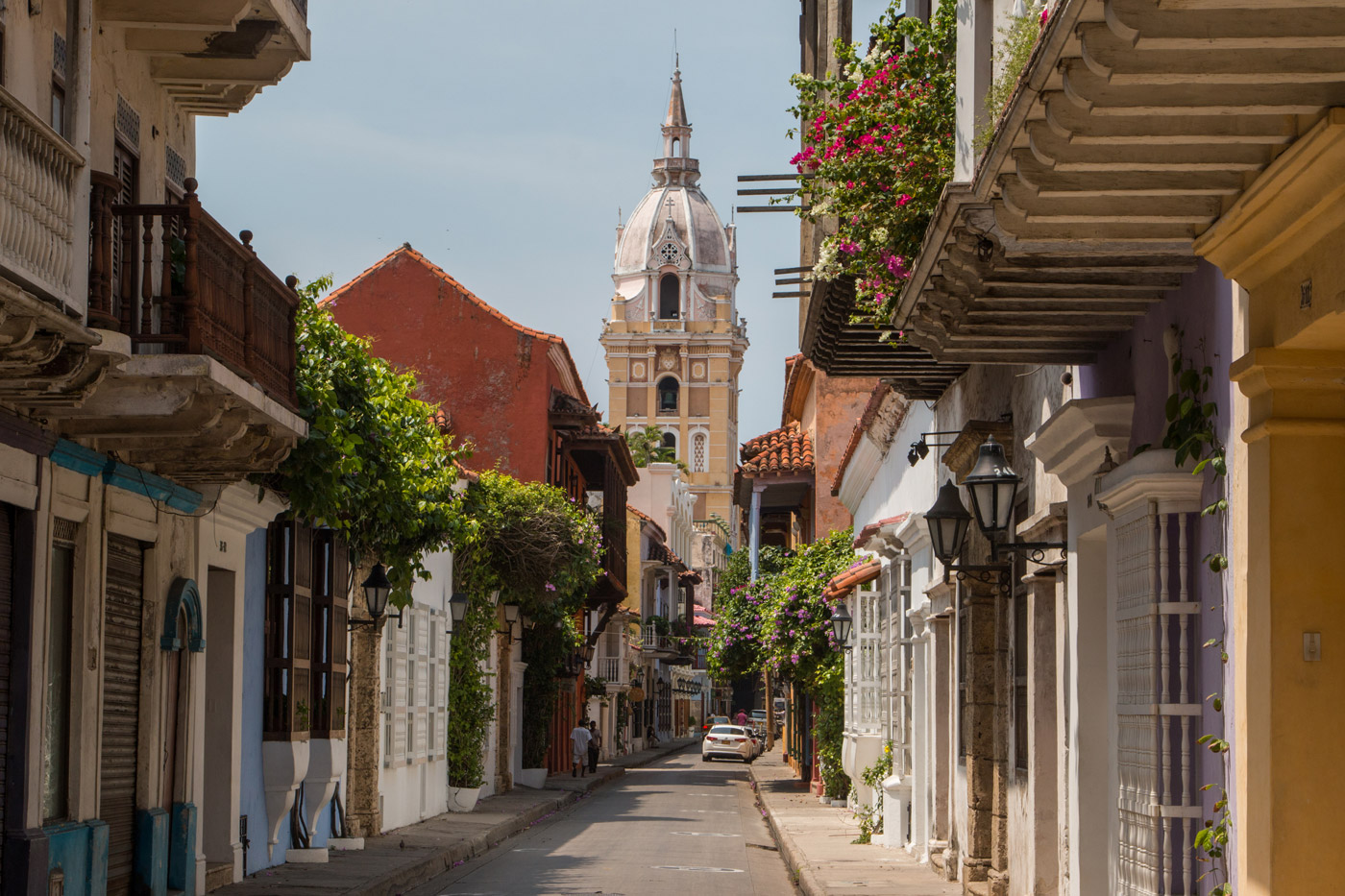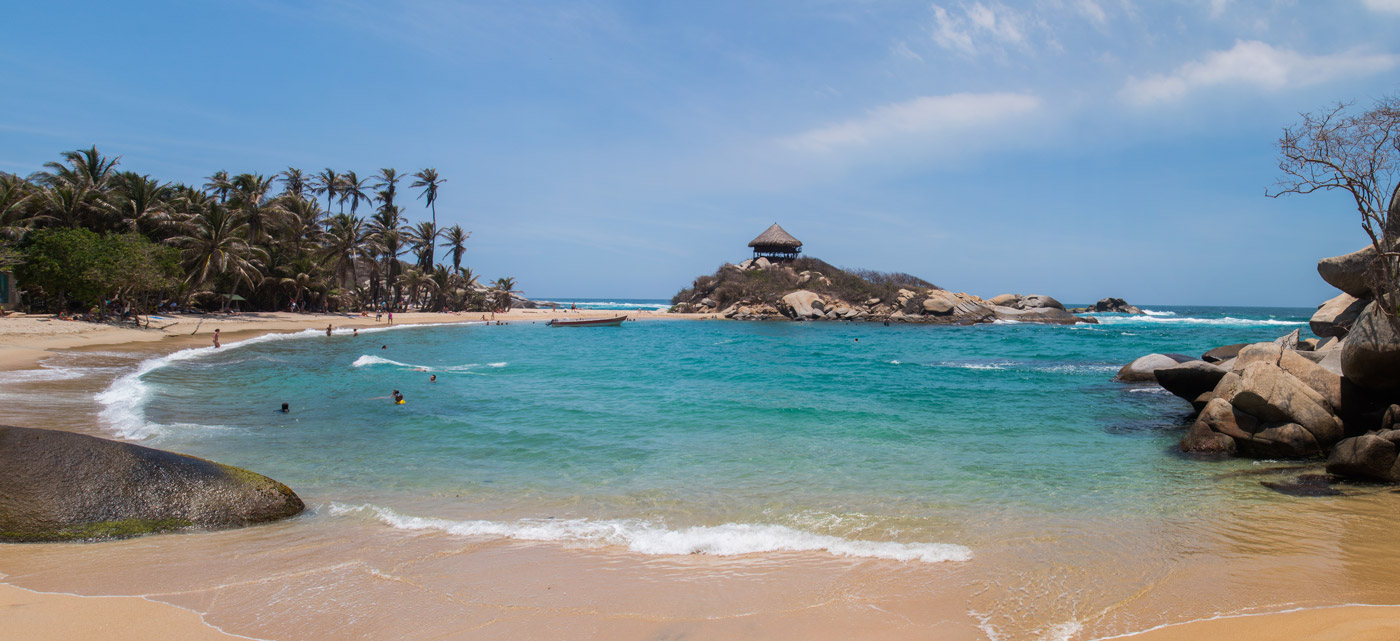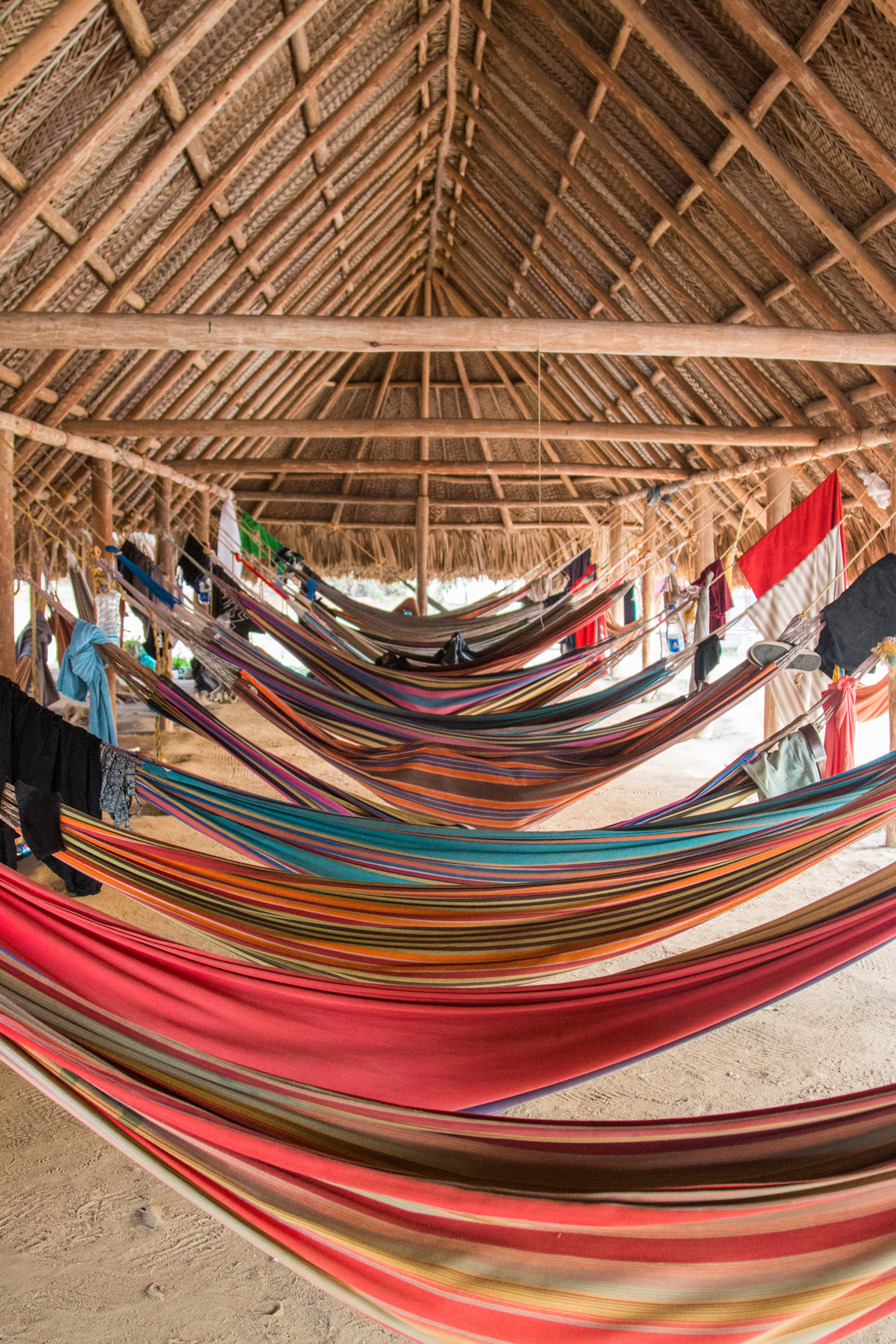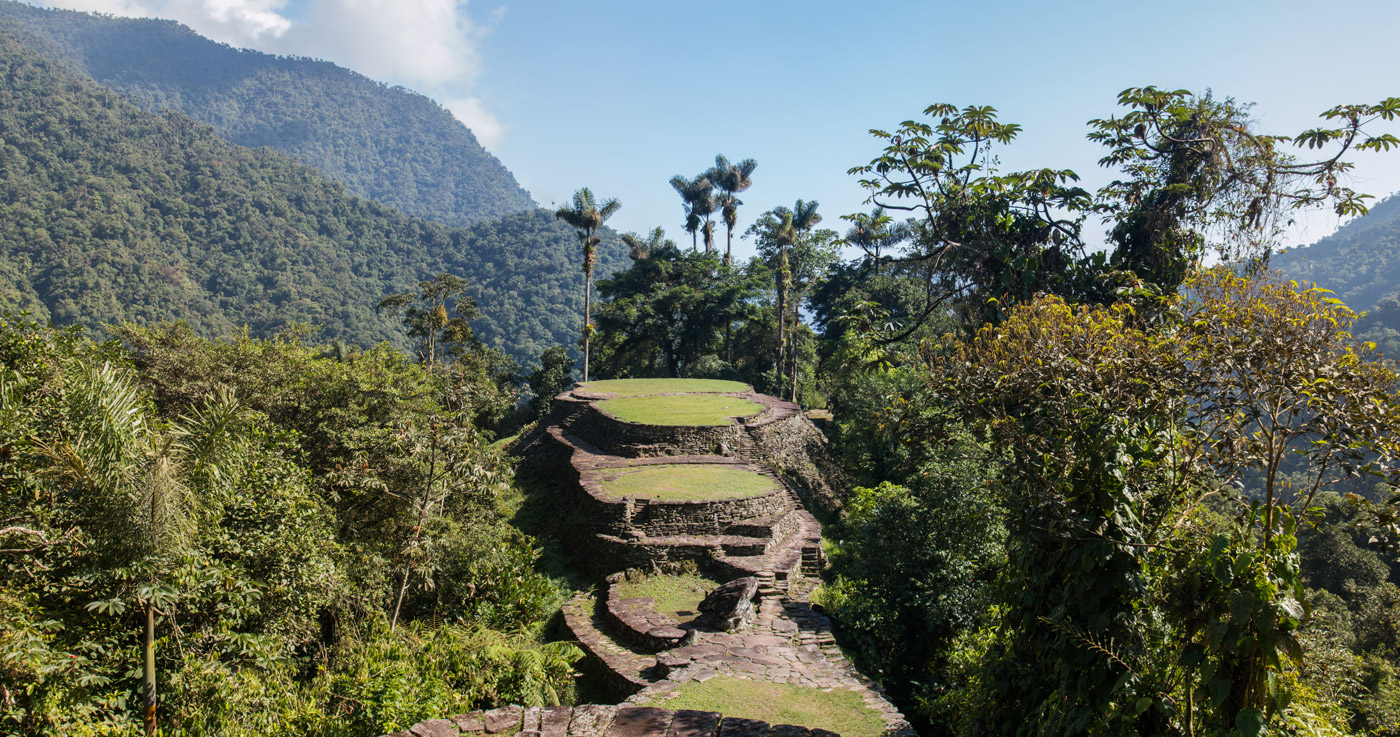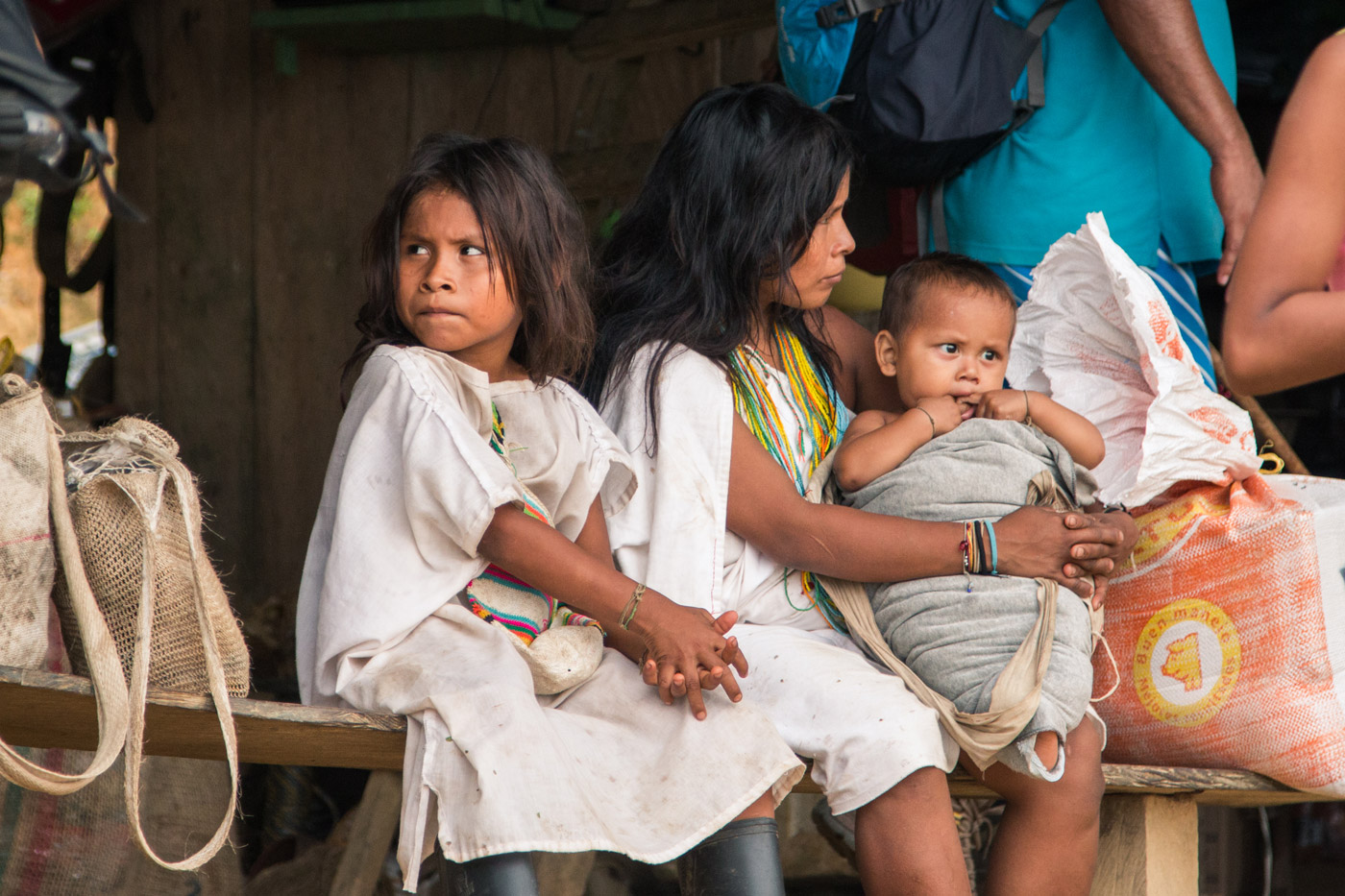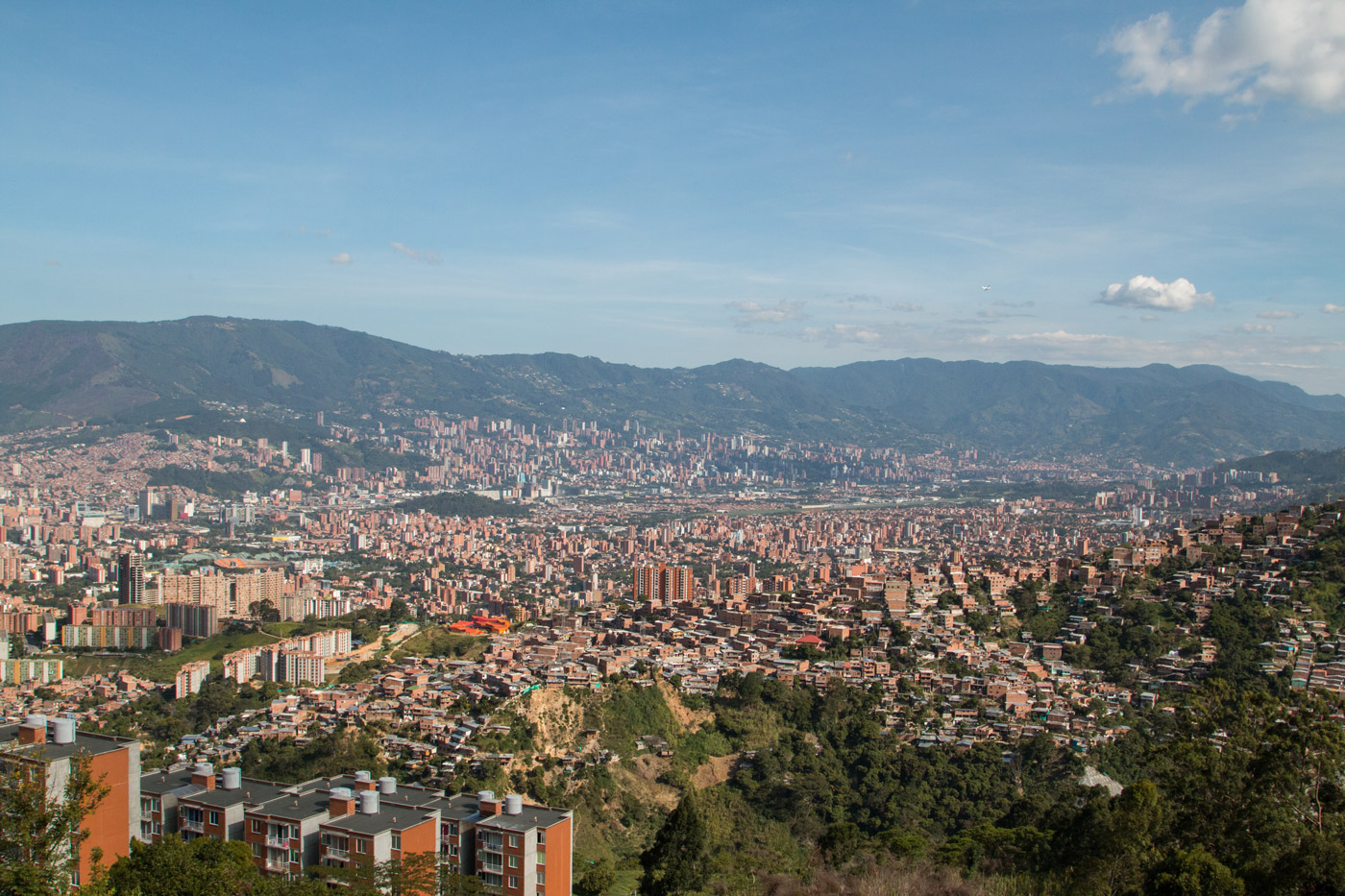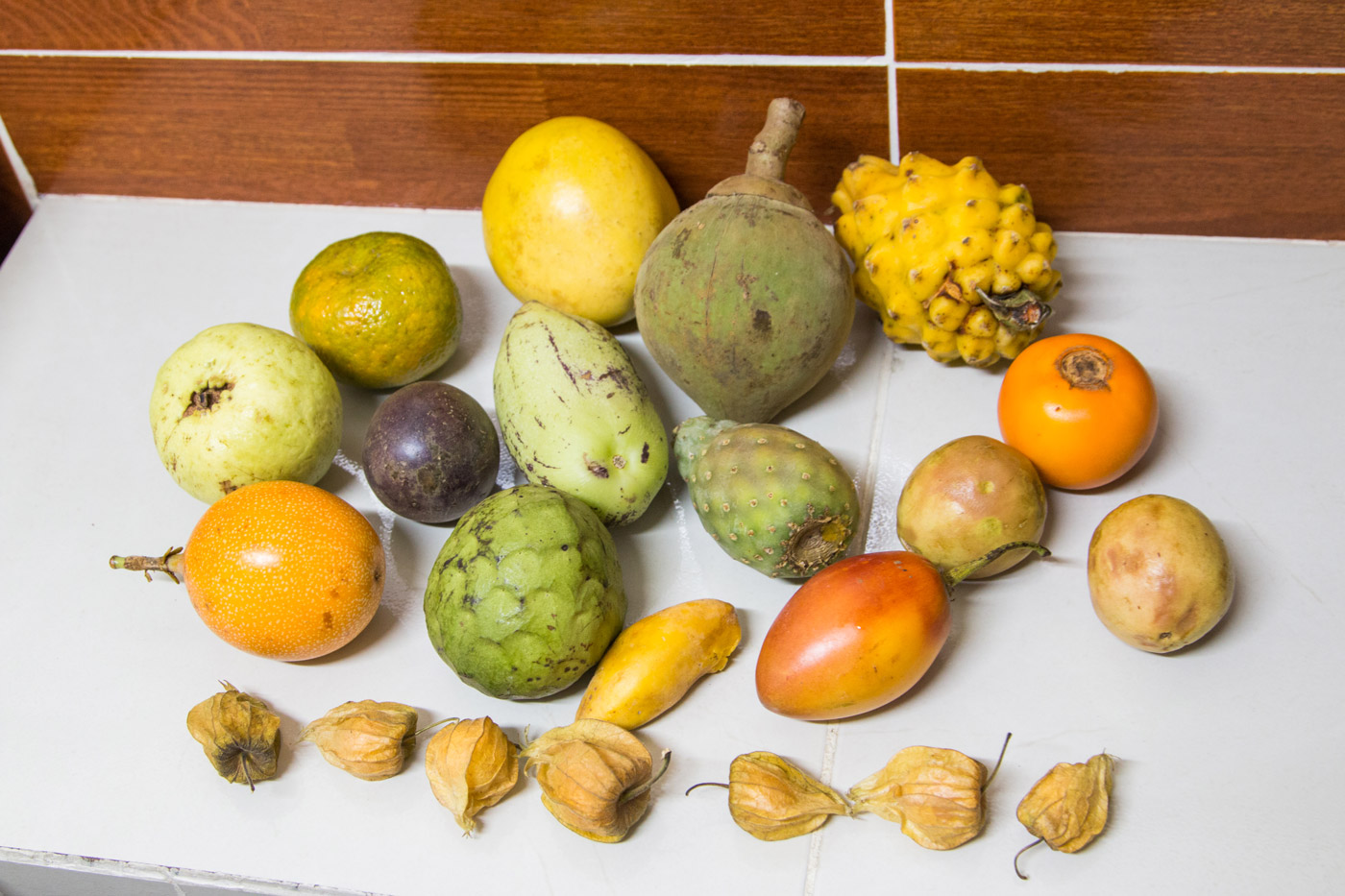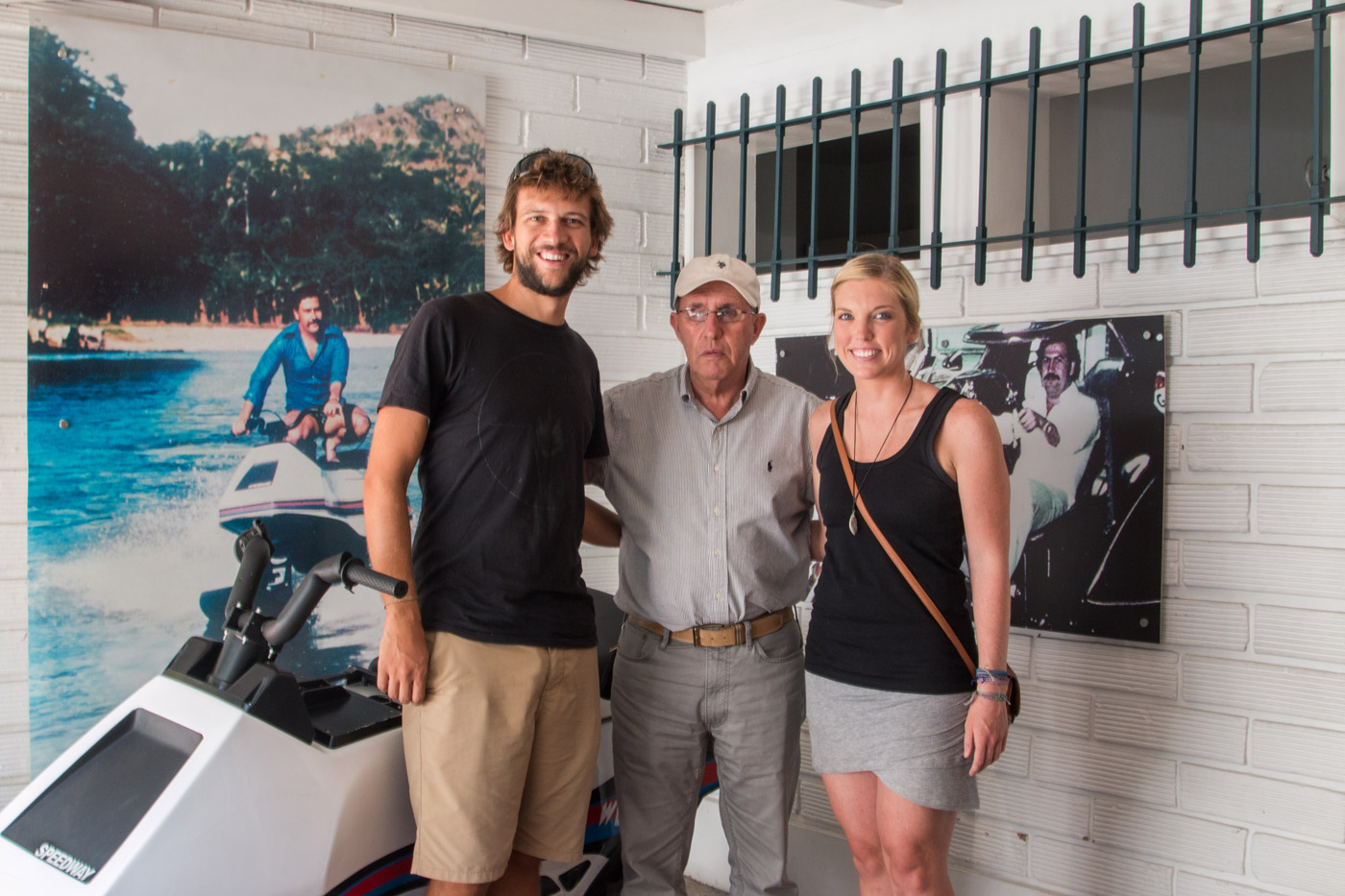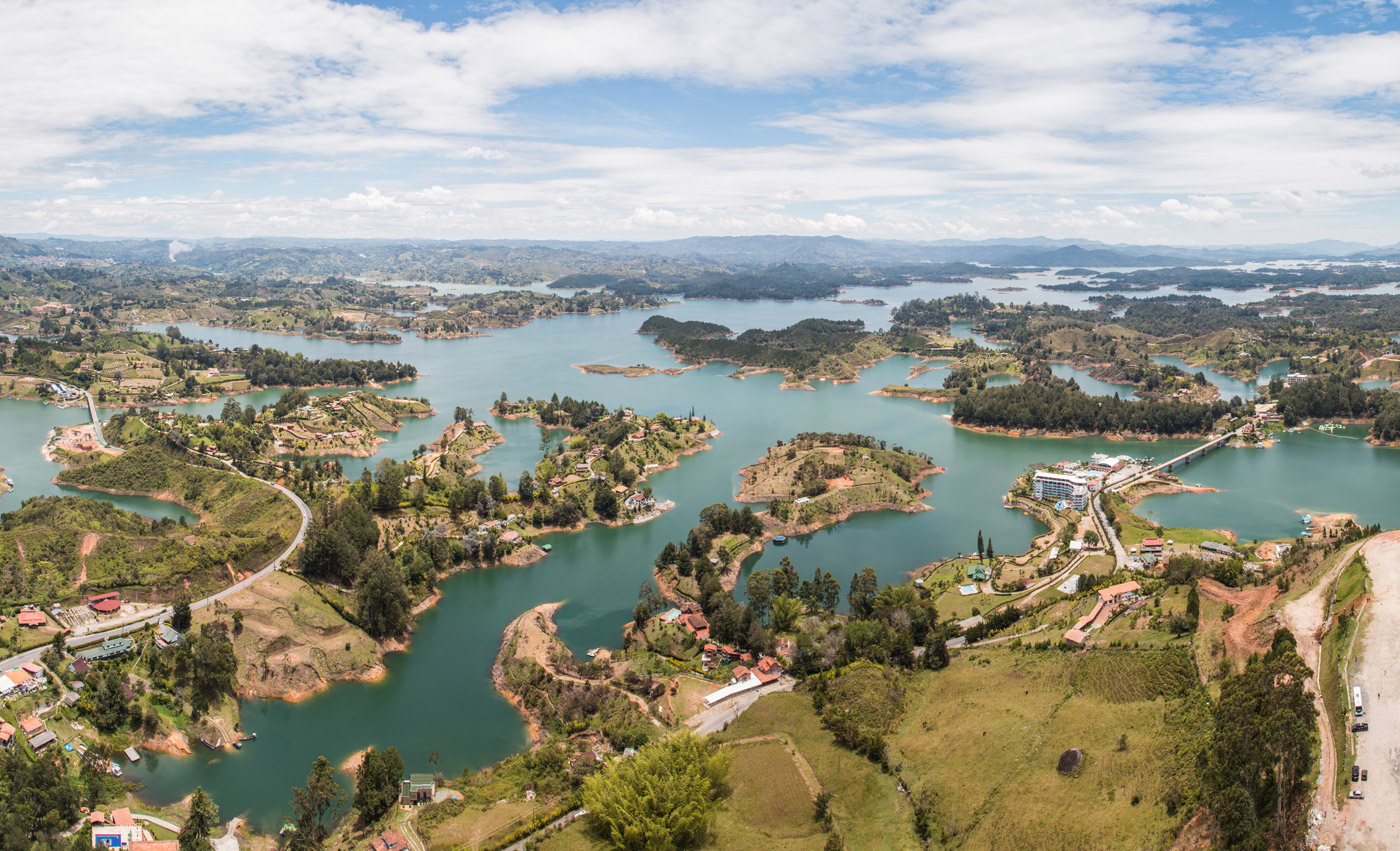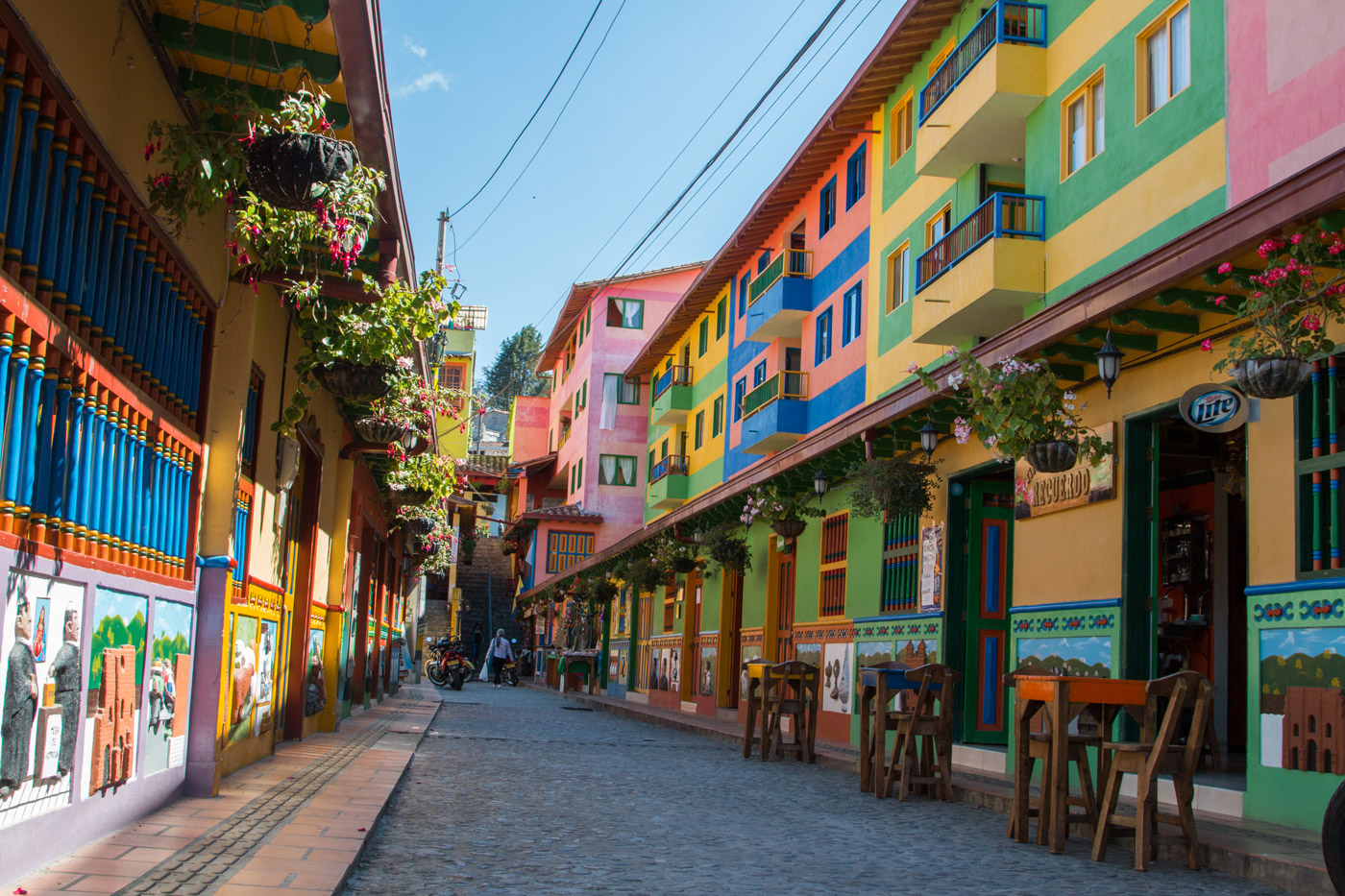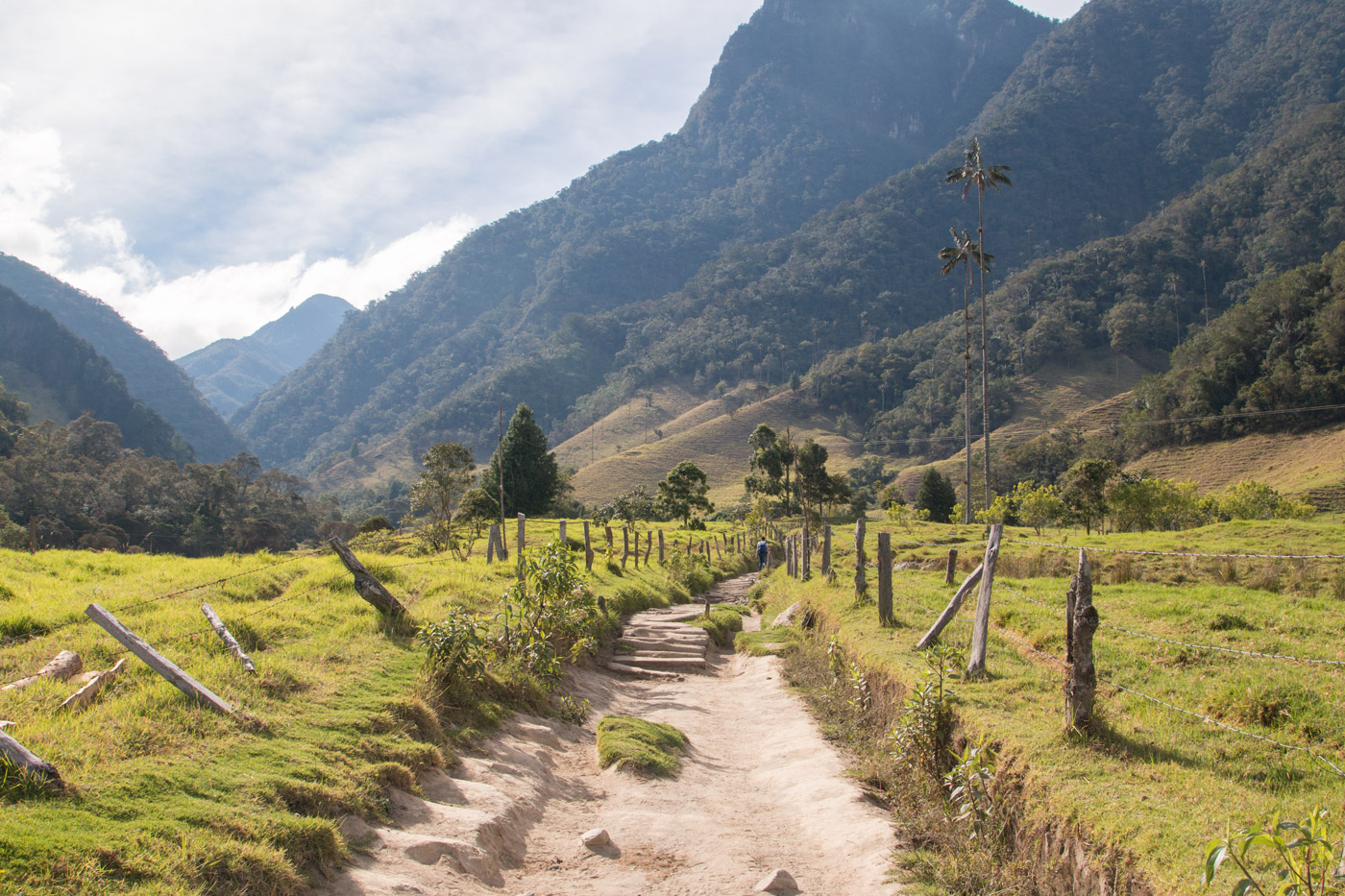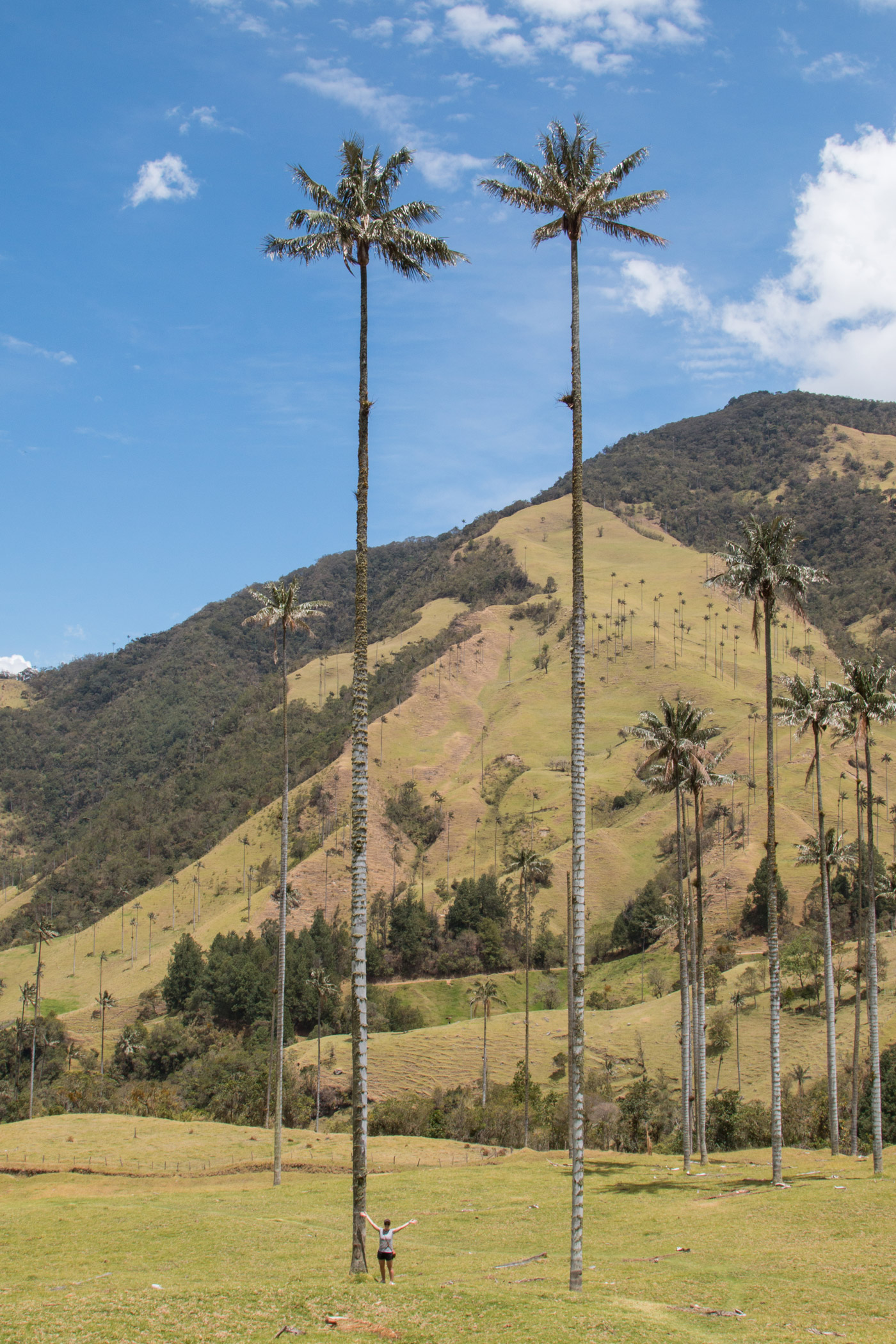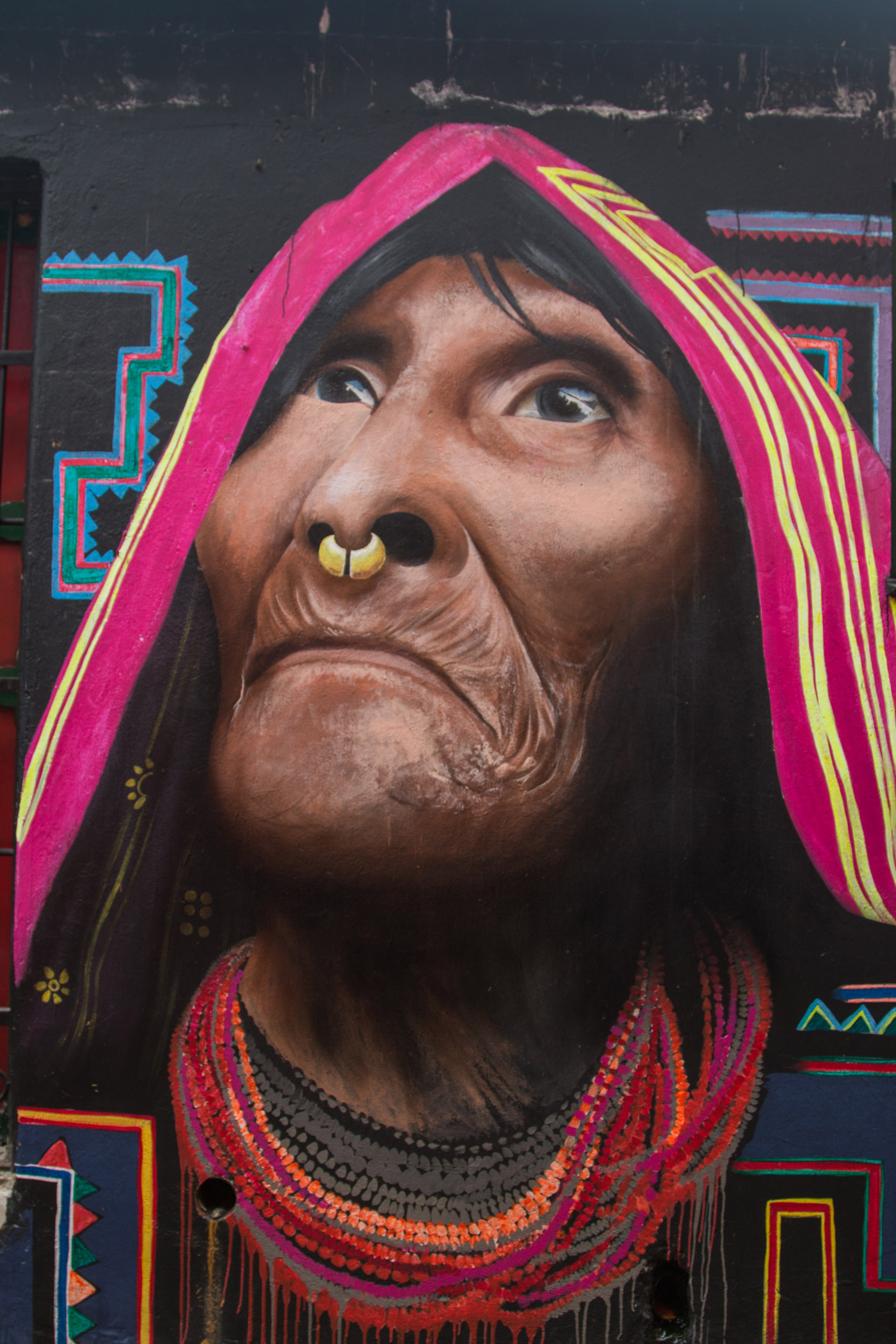The bag check at the Colombian border involved putting our bags on the table opening the zipper and then closing it. Once again no X-ray machines in this part of the world and the carefree approach to inbound security further reinforced my assumption that no one smuggles anything into Colombia…
As recent as five years ago a tourist visiting Colombia was near unheard of. Within the last decade, bombs were exploding in the street, there were almost daily kidnappings, and its people were living in fear, afraid to go outside. Still trying to shake this bad image or stigma the country was now to be excused for not being as prepared for tourism in comparison to many other countries we had visited so far that have had much more time. There was little point getting frustrated at a slow moving line or unnecessary process for these matters will sort themselves out over time as more people visit and afterall, these days we rarely have anywhere to be in a hurry…
Planning this trip, Colombia had been a country we had contemplated skipping on our way through South America purely for its bad reputation and safety concerns. However, as we came through Central America we were repeatedly told by fellow travellers heading in the opposite direction that it was a destination not to be missed. Much to our surprise we found a beautiful country full of diverse landscapes from Caribbean beaches to dense jungles, and mountainous coffee regions to sprawling modern cities. The people were friendly and helpful and were genuinely interested in talking to us, not because they wanted something but because they were excited to learn where we were from and proud that their country had come such a long way in a short amount of time with people now coming to visit. We had a man in the fruit market taking time out of his grocery shopping to explain the exotic fruits and even buying one for us to try, to people from the ticket office even coming out to find us at bus terminals so that they could make sure we got on the right bus.
Our first stop off the boat was Capurganá, a small beachside town on the country’s northwestern Caribbean coast close to the border. On arrival we were told “just swing by the office in town when you feel like it and get your passport stamped” and so we checked into a nearby hostel and after settling in wandered up the street for the 30 seconds of official business. That night we met up with our San Blas boat group for a farewell dinner and some drinks before saying our goodbyes only to realise the majority of the group would be heading in the same direction and we would see each other again. Early the following morning six of us from the tour met on the dock for the first boat out with plans to make the long trip to Cartagena in a day.
Cartagena
Our first main stop was the old city of Cartagena, the first Spanish colony on the American continent. The city is surrounded by a thick wall that once protected it from 16th century pirates and has kept the city so well preserved that in 1984 it was designated a UNESCO World Heritage Site. Faded yellow, pink and blue buildings line the streets filled with flowers from overhanging balconies and large painted doors of all shapes and sizes open to both houses and boutique clothing and jewellery shops. The numerous town squares were always filled with people, both local and tourists, enjoying a drink or food together whilst listening to nearby music.
We spent a day at nearby Playa Blanca, a long, white sand beach on the Caribbean coast with warm, turquoise water. Oblivious to the days of the week, we made the mistake of going on the Sunday of a public holiday weekend and found the beach packed with locals arriving by the bus load to escape the intense Cartagena heat. We walked further up and before long we were enjoying Piña Coladas inside pineapples on a quieter part of the beach whilst floating around in the water.
With the majority of the group from the boat trip now in town we met up one night and walked around the old city together buying cheap drinks from the street vendors. They were so frequent that you could just buy single beers knowing there will be another guy selling cold ones out of an eski as soon as you finish the previous one.
El Totumo, also known as the mud volcano, is a strange yet entertaining day trip outside of Cartagena and involves soaking in the mud inside a volcano crater. The volcanic mud is claimed to have health benefits, whether this is true or not we are unsure but we enjoyed the brief massages from the guys waiting inside and then floated around covered head to toe in mud. The density is hard to explain but as it was so deep you could not touch solid ground making it hard to stay upright. We constantly found our knees floating up to our chins or feet up behind our heads and had to frantically wave our arms about in the mud to keep balance. Upon getting out we were directed downhill to a nearby lake to wash off and were given thorough assistance from the local ladies who quickly had Lauren’s top off followed by both our pants. Sitting naked in the water they washed our clothes as well as us and we walked away spotless and slightly violated.
Taganga
Around six hours from Cartagena is Taganga a small seaside town that gave us easy access to nearby Tayrona National Park. We got up early and took off on a very hot two hour walk through the national park to El Cabo San Juan where we would be spending the night. We walked alongside the coast for the most part before taking a wrong turn and ending up taking the hot, dusty horse track for the rest of the way. It was puzzling to find the place so poorly signposted for a popular tourist spot as we came across several forks in the path, though as mentioned earlier this was not unusual for Colombia. On arrival we were rewarded by the inviting, blue water and sand that sparkled with glittery gold mineral flakes. We were teased with the idea of swimming and relaxing on the beach but instead we first had to endure the unnecessary process of queuing for a hammock to secure accommodation for that night. Having been prewarned of this we managed to be third in line and only had to wait 1.5 hours. The beach was worth it and we spent the rest of the day relaxing in the clear water and taking photos. That night we slept in hammocks, kept cool by the ocean breeze. We took our time slowly walking back and stopping for a swim or a photo at the beaches along the way as well as some freshly squeezed orange juice and seafood ceviche being sold at stalls along the path.
Lost City Trek
A relatively unknown trek in comparison to the likes of Machu Picchu that sees over a million visitors a year, the 47km round trip Lost City Trek has a maximum 100 people allowed into the site a day and less than 10,000 complete the trek a year. Lauren had heard from others that the trek was a must do and whilst I was not yet entirely convinced we took off anyway with the desire to see more of Colombia’s untouched landscapes and experience part of the jungle that few get to see. We had been warned that it would be the “sweatiest you have ever been” and that there were lots of mosquitoes but we were mentally unprepared for what lie ahead walking straight up steep mountains and down the other side for four straight days in the heat and humidity of the jungle. We consider ourselves relatively fit and have done plenty of hikes before, however it was quickly clear we might be in for something a bit harder when we arrived and met some friendly guys in our group, one wearing a past marathon shirt and another an iron man shirt and there I was wearing a beer singlet…
In 2003, hikers on the Lost City Trek were kidnapped by guerrilla groups and held hostage in the jungle for 3 months. These days there is strong military presence in the area carrying big guns and giving us reassuring waves. After the first day of walking we were thrilled to get to the first camp. Exhausted, no one lasted much longer after dinner and all retired to our hammocks for the night knowing it would be an early start and lots more walking the next day. With our clothes smelling and drenched in sweat the best we could hope for was hanging them out overnight to dry and air out. Trouble is nothing dries overnight due to the humidity, if anything it gets wetter.
The second day was tough for me after being up all night with a bad fever, uncontrollable shivering, sweating, dizziness and a pounding headache from suspected heatstroke. After the morning of walking we continued in torrential rain for another five straight hours, soaked through, with the slipperiness of the muddy hills and hopping between rocks made even harder by my lack of balance whilst sick. An hour from our next camp we came to a river crossing that was normally knee height however because of the rain it was instead chest deep, fast flowing rapids. One by one we pulled ourselves along a rope strung across the river and made it to the other side, something that would never be allowed back home.
Seven litres of water throughout the day and an early nights sleep in the hammocks meant I was feeling a lot better the following morning and ready to tackle the walk and 1200 step climb into the Lost City. Believed to have been founded about 800 CE, some 650 years earlier than Machu Picchu, archaeologists still today believe it is only 10% discovered. We were fortunate to have blue sky and great visibility as we sat and admired the view, very satisfied that we had made it.
The walk home was completed in two big 7+ hour days back along the same way we had come in. Exhaustion, lots of sweat, and blisters followed us to the end and we were more than relieved to finally see the carpark at the finish. We passed clean, fresh faces on their way in and wished them luck just as other groups had done to us four days prior. If only their smiling faces knew what they were in for, we thought, as we joked at how cocky and confident we also must have looked to others when we first started.
I will say though that despite the struggle detailed above it definitely gave us a sense of accomplishment. We pushed ourselves through some amazing landscapes, passed many local indigenous families living basic lives along the trail and made it to the remote site that is only accessible on foot and is something few people will ever see.
Medellín
The city of Medellín was once known as the most violent city in the world, home to the notorious Pablo Escobar and the scene of constant brutal conflict between competing drug cartels as they terrorised the city and even the country. The city has since gone through tremendous transformation and was even recently chosen as the most innovative city in the world, outranking New York, as a result of its recent advances in politics, education and social development. The residents are proud of this progress and are enthusiastic about the benefits the newfound safety brings, not only to their everyday lives but in slowly rebuilding the country’s image to the rest of the world. Parts of the city, especially El Poblado, looked so modern and trendy the restaurants and bars could’ve been mistaken for Surry Hills, Sydney.
“What did your friends and family say when you said you were coming here?”
Was the opening line from the ironically named Pablo, our guide for the free walking tour around the city. It was a question that was clear he had asked many times before and one that he already knew the answer to. We had heard and read many good things about the Real City Walking Tour and had chosen to reserve a spot on our first day as a great way to get familiar with the city and get a local perspective on the history of Medellín. Pablo is a passionate and knowledgeable guide of similar age to us and gave us an honest and informative background of a city with a very dark past. It was both alarming and fascinating to realise that the events that took place occurred in our lifetime and when he speaks about this era, you know he is talking about something he lived through himself.
Its encouraging to notice that our guide, along with many others that we met during our month long stay, have the foresight to realise that if they provide a memorable experience to visitors these people will go home with nothing but good memories and great things to say about Colombia. Pablo went as far as to say that even if one person in our group inspired a friend back home to visit Colombia then the country and its tourism industry has come a long way.
One part of travelling I find most enjoyable is trying all the various street food in each of the new countries. Colombian stalls appeared to take pride in deep frying as many different types of food as possible which meant that out of “convenience” empanadas became almost a daily snack for me. We also tried many other things from the deep fried selection including eggs, cheese and dough. Thankfully, Colombia wasn’t just fried foods, it is home to many exotic fruits found only in this part of the world. Freshly made natural juices can be found all over the country and are often included with any meal or for cheap in the streets. We made a trip to the local fruit market, with a plan to buy any fruit we had never tried before. It wasn’t your typical tourist attraction and as the only non-locals in the whole market we stood out more than usual but had a great time practicing our Spanish as we walked around asking about the fruits and ended up coming away with a full bag of unique pieces of fruit to try.
With a spare afternoon, we decided to use the city’s Metrocable to venture uphill through the underdeveloped neighbourhoods to get a better view of the whole city. The Metrocable is a gondola lift system built as an extension to the train network to enable residents in the poorer outer mountain suburbs easy and cheap access to the city. And cheap it was! We took the train from our hostel to the end of the line, rode the gondola all the way up to the top, took some photos and then rode back down before taking the train back home all for $0.88 AUD.
I figured a trip to Medellín would not be complete without some insight into the life and times of one of the world’s most well known and wealthiest criminals in history so we went on a private Pablo Escobar tour. The controversial tour is not advertised online as its not exactly legal and is a topic the government and most Colombian’s would rather put behind them. We first visited Pablo’s grave before our guide took the two of us to visit one of Pablo’s first houses. We followed a private driveway in the hills overlooking the city until our driver stopped at a large gate and beeped the horn. Inside and with the gate closed behind us we learned the house was attacked as recently as four years ago and could see it is riddled with bullet holes. One of Pablo’s old farms was also attacked a week before in search of some of the many millions of dollars buried around the country. As the only two on the tour it suddenly felt very real. Inside the house we were lucky to meet his brother Roberto, who was once one of the financial brains behind the Medellín cartel which in the height of its power was smuggling fifteen tons of cocaine per day and bringing in more than $60 million a day. I’m currently reading his book, The Accountant’s Story, and can’t imagine the things this man has seen and done.
Guatapé
We took a bus early in the morning to spend the day at Guatapé, a town in the outskirts of Medellín. Midday through the journey our bus was stopped by police and an officer holding an assault rifle ordered Lauren and I, along with a couple of others, off the bus for not having our passports to show. Our bags were emptied and searched on the side of the road and the locals on our bus all moved to the window to watch and take photos. He asked us questions we couldn’t understand and was not happy. Sometimes its better not knowing Spanish.. Our first stop of the day was the giant rock formation, La Piedra Del Peñon, standing 200m high overlooking the countryside and waterways. We climbed the 740 steps to the top via a steep staircase built into the side and were rewarded with the following view 2137m above sea level.
The small town of Guatapé was colourful and welcoming with each building brightly painted and their lower walls covered in handpainted tiles containing multi-dimensioned images. Many of the tiles are tied to the products sold by the shops, or the interests and beliefs of the residents and we saw everything on them from sail boats and fishing to llamas and children playing.
Salento
After a week in Medellín we had to move on, taking a bus six hours to Salento. That night armed with some beers (long necks for $1.23 AUD!) and local rum we met up with some friends for a drink and a catch up, not having seen them since Panama City.
Salento took me by surprise and ended up being one of my favourite stops in Colombia. The small town is situated in the coffee regions peacefully surrounded by mountains and valleys and has largely retained its original architecture and history. The town’s restaurants specialize in local freshwater trout cooked in a variety of sauces and served with many side dishes for prices so low you are amazed they can profit. We had a very filling lunch of trout with salad, soup, rice, vegetables, plantain chips, corn cakes, a banana and a drink for $2.63 AUD.
Colombian coffee is often regarded as some of the highest quality in the world and so what better place than the coffee plantations of Salento to do a tour. We walked along a dirt road to a small organic coffee farm and were led through every step from growing the beans, washing and removing the skin, drying, roasting and grinding before we each sat down to a cup of the finished product. What I found most surprising was that Colombia exports the majority of their coffee, only keeping the lesser quality for their own consumption. So despite being in the home of coffee, a cup purchased in a cafe is not necessarily made with the good quality beans.
Taking a short jeep ride out of Salento we visited the Cocora valley, home to the national tree and symbol of Colombia, the Quindío wax palm. Arriving early in the morning we set off hiking towards the valley and walked without seeing anyone for most of the day.
We walked for a few hours crossing rivers on unsteady bridges and admiring the scenic views as we climbed up and over the mountain. Looking down the other side we had reached the valley and were dwarfed by the huge wax palms, some reaching 60m high. We had the whole area to ourselves and mucked around taking photos for almost an hour.
I’ve said it before but I’m a big fan of any sport that can be played with a beer in one hand, such as lawn bowls or bocce, so I was excited to get a chance to play Colombia’s national sport, Tejo. It similarly involves taking turns and throwing a heavy weight across the room, instead at a board covered in clay, with aims to beat your opponents by getting it closer to centre ring. Tejo, however has another welcome addition and that is explosives! Gunpowder is wrapped in small paper parcels and placed around the ring resulting in loud explosions and sparks if you manage to hit one. We recruited a friend, Matt, we had met back in Panama and together with a couple of his friends spent an evening mingling with the local guys in a Tejo bar in town. They were more than happy to get us set up and show us how to play. We started off poorly with a few stray weights from the others missing the boards entirely and coming dangerously close to the heads of unsuspecting bystanders. One eventually joined in our game and we got much more competitive each managing to trigger explosions. After reading the “official” rules, where a beer in the hand is more than encouraged, it is expected, I think I just found my new favourite sport. Though as popular as it would be back in Australia there is no way anything like this would be allowed to exist…
Bogota
Our final stop in Colombia was Bogota, an all day but nice bus ride away with wifi, TVs in each seat and near lie flat reclining seats. After a tiring travel day we found our way to the hostel and then went out to grab some quick dinner, with my beer costing a satisfying $0.91 AUD!!
We spent much of the day shopping to find Lauren a replacement camera, after she lost her last one on the Lost City Trek. Unsurprisingly the selection was lacking but after multiple shopping centres and a lot of charades we got one. As anyone who knows Lauren and her attachment to taking photos it was just as much a relief to me as it was her that she finally found a new camera… maybe more.
One of the biggest drawcards for tourists to Bogota is the graffiti tour. Unlike most other cities, Bogota and its building owners are much more accepting towards street art and often a verbal agreement is enough from a homeowner to allow a wall size artwork to be painted. It is seen as something beautiful for tourists to associate with Colombia and show their friends back home. The tour took us through the many streets and alleyways of the city as our guide pointed out pieces of work explaining them, and their artist, as we went. With more lenient laws now in place painting can be done in daylight without fear of prosecution resulting in higher quality pieces and public recognition instead of hiding behind a nickname/moniker. Some artists have become commercially successful with one fence we saw having been recently appraised to be worth $10-15k if it were ever able to be sold.
Colombia ended up being one of my favourite countries so far and looking back I can’t believe we even considered missing it. It turned out to be my most photographed place of the trip so far and was such an interesting country that it prompted lots of further reading on its recent history and a fascination with its dark, violent past. Next stop for us is Ecuador as I move back into the same half of the world as Australia after 7.5 months in the Northern Hemisphere.
